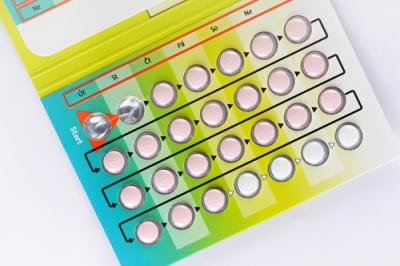Science Mom: Everyday Items Anti-Vaxxers Should Fear Just As Much As Vaccines
 If there’s one thing anti-vaxxers love more than telling us how vaccines will give our kids autism, diabetes, and Alzheimer’s Disease, it’s posting long lists of the terrifying ingredients that vaccines contain. But if these ingredients are so scary, why stop at vaccines? Under the very charitable assumption that the outcry against these chemicals is based on something other than anti-science woo, I’ve decided to reach out a helping hand to our anti-vax friends, by assembling a list of things to avoid at the grocery store based on the components they share with those scary, scary vaccines.
If there’s one thing anti-vaxxers love more than telling us how vaccines will give our kids autism, diabetes, and Alzheimer’s Disease, it’s posting long lists of the terrifying ingredients that vaccines contain. But if these ingredients are so scary, why stop at vaccines? Under the very charitable assumption that the outcry against these chemicals is based on something other than anti-science woo, I’ve decided to reach out a helping hand to our anti-vax friends, by assembling a list of things to avoid at the grocery store based on the components they share with those scary, scary vaccines.
1. Formaldehyde
It’s true: everyone’s favorite biological preservative, formaldehyde, is found in trace amounts in some vaccines. As well as turning dead frogs into rubbery, dissectable dolls, it turns out that formaldehyde is great at murdering the shit out of viruses … and murdered viruses are a lot safer to inject into an eighteen-month-old than the live kind. Your body’s immune system recognizes the shapes of the microbes trying to infect you, and a virus corpse is pretty much as good as the real deal, with the bonus that it can’t make you sick. Most of the formaldehyde gets removed in the vaccine preparation process, but the odd molecule or two get left behind.
Things to avoid: If an infinitesimal quantity of formaldehyde worries you, you should also skip the following foods that contain higher-than-average amounts of the stuff: grapes, mushrooms, potatoes, beets, cauliflower, bananas. Also, since your own body can produce formaldehyde as a byproduct after eating certain foods, you may want to try to transcend your mortal body and become an entity of pure spirit. Good luck!
2. Mercury
Mercury, in the form of thimerosal, has been removed from most vaccines, although you can still find it in multi-dose flu vials. It serves an anti-contamination purpose, because sticking yourself with a flu vaccine enriched with seventeen strains of grody bacteria is, according to numerous leading scientists, “hella dumb”. The flu vaccine you get at your doctors office is a single-serving variety, and thus mercury-free, so if anyone tries to tell you to skip it (let alone MMR, Tdap, or anything else) because it’ll turn you into the Mad Hatter, they are a liar and/or a dupe.
The good news is that the flavor of mercury used in vaccines is ethyl mercury – different from the “bad” mercury in a similar way to how the kind of alcohol in wine and 99 Bananas is different from wood alcohol. This kind of mercury doesn’t stick around in your tissues forever like methyl mercury does, and it’s hard for mercury that’s been flushed down the toilet to cause long-lasting health effects.
Things to avoid: Fish and shellfish, of course, especially larger varieties of sea-critters, since mercury accumulates as it works its way up the food chain out there in all-natural nature. With a shaky grasp of chemistry, it’s probably also best to skip the beer, wine, and liquor aisles, since you apparently can’t tell the difference between a bottle of Bailey’s and bootleg bathtub gin that’ll turn you blind with one good whiff of the fumes.
3. Chicken embryo fibroblasts
Influenza and some other, less common vaccines are literally produced inside chicken eggs. “Chicken embryo fibroblasts” is scientific fancy-talk for “chicken fetuses”, which are of course the other leading product generated inside of chicken eggs. If you have an egg allergy it’s best to skip a flu vaccine, but for the rest of us, the only actual harm you may suffer from this additive is a slight shiver down your spine at the thought of residual chicken gunk being injected into your body.
Things to avoid: Farm-fresh eggs, which in my experience often contain an entire chicken fetus and not just a few odd cells in the mix. Also, if chicken fetuses bother you so much, I assume it only gets worse when they’re fully grown – no visits to the rotisserie either, please.
4. Aluminum
Aluminum is something called an adjuvant – a sort of molecular cheerleader that provokes your immune system into a stronger response than the virus in the vaccine could have generated alone. “Rah rah sis boom bah, sock the measles in the jaw!” While high doses of aluminum can pose a health risk, the amount in a vaccine isn’t anything to worry about, especially since you shouldn’t be getting a vaccine every day of the week. In fact, the 0.85 milligrams of aluminum in the Pediarix vaccine is equivalent to the amount of aluminum in two or three days’ worth of infant formula (or about from two to three weeks’ worth of breastfeeding) – assuming your baby drinks around 30 ounces a day. Oops!
Things to avoid: The amount of aluminum in our diet is pretty small, but just to be on the safe side, you’d better skip infant formula, high-acid canned foods (tomatoes, pineapple juice), certain antacids like Maalox and Mylanta.
5. Antibiotics
Remember how some vaccines are grown in eggs? Break an egg open into a jar and leave it on the counter for a few days, and then decide if that’s something you’d like to inject into your upper arm. Yes, some vaccines have antibacterials added to them, once again to prevent the unpleasant consequence of shooting a helpless child full of live bacteria.
If you object to this out of a sudden interest in sound antibiotic stewardship, here’s a newsflash for you: this is one of the important uses we’re supposed to be saving antibiotics for. And if you’re worried about an allergic reaction to a particular drug, don’t be: talk to your doctor if you do have an allergy, but highly reactive drugs like penicillin aren’t the ones used inside of vaccines.
Things to avoid: If sound antibiotic practices are your current jam, you’ll want to skip any mass-produced meat, milk, and dairy products that don’t specifically come with an “Antibiotics-Free” label. Sorry, but that yummy cup of Oikos probably originated in a cow crammed full of bovine growth hormone and antibiotics.
6. MSG
Not just a staple of your favorite Chinese food, MSG, (also known as monosodium glutamate; also also known as ‘that chemical that makes stuff taste real good’) is used as a stabilizer in many vaccines. It’s the molecule responsible for the the flavor umami, that meaty goodness that makes mushrooms and, well, meat taste so good. MSG is basically just a modded version of glutamate, one of the amino acids that makes up every protein in your body, and despite the bad reputation of ‘Chinese Food Syndrome’, it takes about five times more MSG to kill a lab rat than it does straight-up salt. Extrapolating to humans (which is a bit of a wild extrapolation, but it’s a fun one, so let’s go with it), it would take about two pounds of the stuff to kill someone my size, which I assume I could accomplish either by eating or by smothering myself with.
Things to avoid: Soy sauce, tomatoes, mushrooms, Parmesan, and of course Chinese food.
I hope this list will help some anti-vaxxers figure out their footing at the grocery store, so that they can avoid all these terrible toxins (as well as all the inherent benefits that come along with consuming them in extremely miniscule amounts). And if you find your stomach growling, well – have you looked into breatharianism as a dietary option? It’s free, and best of all, it’s about equally as well supported by science as your anti-vaccine sentiments are.






